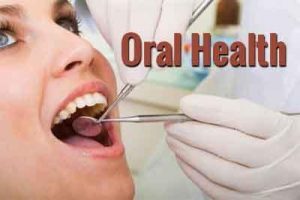- Home
- Editorial
- News
- Practice Guidelines
- Anesthesiology Guidelines
- Cancer Guidelines
- Cardiac Sciences Guidelines
- Critical Care Guidelines
- Dentistry Guidelines
- Dermatology Guidelines
- Diabetes and Endo Guidelines
- Diagnostics Guidelines
- ENT Guidelines
- Featured Practice Guidelines
- Gastroenterology Guidelines
- Geriatrics Guidelines
- Medicine Guidelines
- Nephrology Guidelines
- Neurosciences Guidelines
- Obs and Gynae Guidelines
- Ophthalmology Guidelines
- Orthopaedics Guidelines
- Paediatrics Guidelines
- Psychiatry Guidelines
- Pulmonology Guidelines
- Radiology Guidelines
- Surgery Guidelines
- Urology Guidelines
Mapping a path to better oral health

Dentists aren't the only people who influence how we take care of our teeth; our friends and family play a big role, too. That is the conclusion of Brenda Heaton, an assistant professor of health policy and health services research at Boston University's Henry M. Goldman School of Dental Medicine, who is presenting her research at the American Association for the Advancement of Science (AAAS) conference in Boston.
Heaton specializes in social epidemiology with a focus on oral health. In 2008, she, along with other members of BU's Center for Research to Evaluate & Eliminate Dental Disparities, began a new line of research, focused on understanding oral health and disease among residents in Boston public housing. The majority of the work to date has focused on whether or not "motivational interviewing" can influence how women care for their children's diet and oral health specifically, the impact on kids with dental caries (also known as tooth decay). There is mounting evidence that one-on-one behavioral interventions, like motivational interviewing, may change short-term behavior, but the effects don't last long. "We started to get a sense that there may be more influences that we need to acknowledge beyond just the individual," says Heaton. She found that social networks not Facebook and Twitter, but networks of friends, family, and acquaintances may play an overlooked role in oral health care.
Some women Heaton interviewed "had been born and raised in the unit that they were living in, and were now raising their own child in that unit," she says, "so we had grandmother, mother, and child in one unit." Those close connections influenced how people behaved, and to make significant progress against diseases like tooth decay, Heaton had to tap into those networks herself.
That is not easy, but it is important, says Thomas Valente, a professor of preventive medicine at the University of Southern California and an expert in social networks in health care. People believe information more when it comes from someone they know or respect, and evidence suggests that people are more willing to trust people who are like them. All too often, says Valente, who was not involved in this study, health information is handed to a community by people on the outside, and it is less impactful. "It's like West Side Story," says Valente. "It's like being a Shark and having a Jet come up to you and tell you to do something. It is just not going to happen."
Heaton wants to spread resources about good oral health, not only to combat tooth decay but also because oral health is intertwined with other health concerns. "Sugar-sweetened beverage [consumption is] something that we are very interested in, not only because it is a huge risk factor for oral health outcomes, but it is also a huge risk factor for obesity and other obesity-related health conditions," she says.
To understand the connections that already existed within the community, Heaton needed to draw a social map. Since 2008, her team has interviewed close to 200 women living in Boston public housing and identified nearly 1,000 individuals who were influential. Heaton is using those network maps to find similarities about how information flows through these communities.
The ultimate goal, she says, is to use the map to introduce health information and resources into a community in ways that change long-term behaviors.
"You can't design those interventions until you actually have a really strong grasp of the network structure," says Heaton. For instance, if you want to make an impact, should you look for community members with the most personal connections or for people with large influence but fewer personal ties? Should you take advantage of existing connections or seed new ones?
The power of this approach is that it focuses on prevention rather than cures, says Heaton. It might take a village, but tooth decay "is an entirely preventable health outcome."

Disclaimer: This site is primarily intended for healthcare professionals. Any content/information on this website does not replace the advice of medical and/or health professionals and should not be construed as medical/diagnostic advice/endorsement or prescription. Use of this site is subject to our terms of use, privacy policy, advertisement policy. © 2020 Minerva Medical Treatment Pvt Ltd